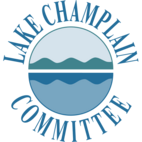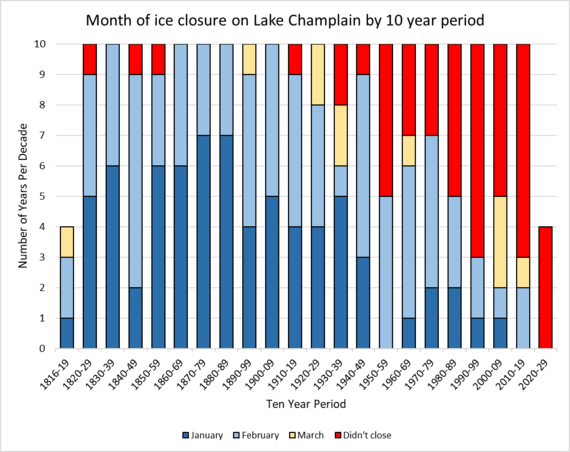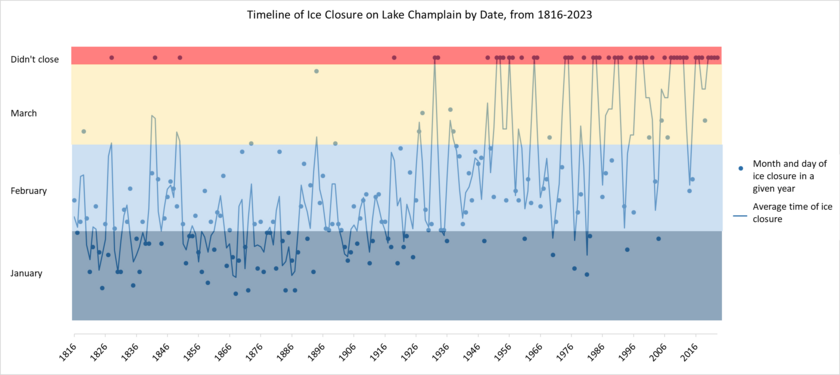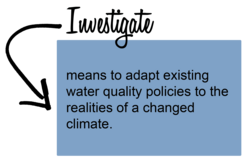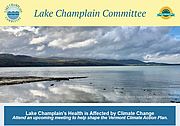Vermont is becoming warmer and wetter due to climate change. Specifically, the Vermont Climate Assessment 2021 notes that both summer and spring precipitation have increased in the Green Mountain State. The Assessment cautions that “[t]his spring precipitation . . . can make farm operations difficult.” Read...
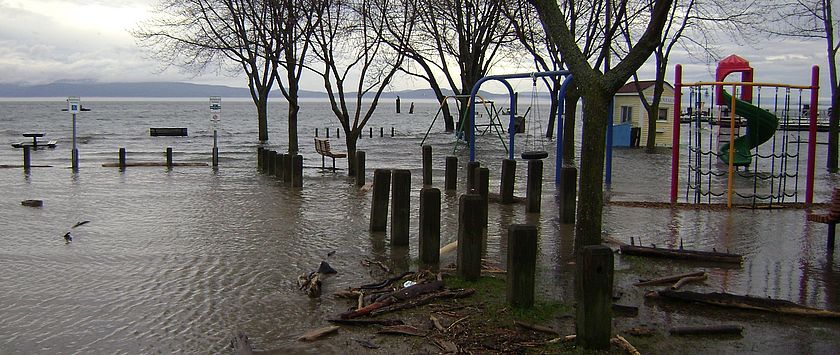
Global Warming
A warming climate can bring about physical, chemical, and biological changes in Lake Champlain. While some of the physical and chemical changes are fairly straight-forward, others are speculative. Potential biological changes are even more difficult to predict.
Physical changes mostly involve the temperature of the lake. Higher winter temperatures lead to a reduction in winter ice cover. You may have noticed that such reductions have already begun. Prior to the 1950s it was highly unusual for Lake Champlain not to freeze in a given year, but recently an absence of ice cover has become a fairly regular event. Higher temperatures mean the lake will stratify earlier in the spring — setting up a warm layer of water over a colder deeper layer — and will stay stratified longer. A 1979 study stated stratification in the Main Lake typically began in early June; more recently, however, stratification has begun in early- to mid-May.
Most computer models predict an increase in precipitation in the Northeast as global temperatures rise. Furthermore, the intensity of precipitation events is likely to increase, meaning more rains of 1 inch or more. More intense storms will likely mean increases in flooding and erosion-related run-off. More erosion will lead to more nutrient pollution in the lake.
Chemically, decreases in the oxygen content of lake water will likely occur. Warm water holds less oxygen than cold water. Additionally, the longer duration of summer stratification will increase the likelihood of oxygen depletion in lower layers of the lake water. Such oxygen depletion occurs fairly regularly in the Northeast Arm of the lake.
Predicting biological changes in Lake Champlain as a result of global warming means attempting to integrate the impacts of all the physical and chemical change on each species and speculating about how they will affect that species’ interactions with other species. Fish will need to adapt because spawning in many species is triggered by optimum temperatures. Earlier warming will mean earlier spawning. Perhaps more importantly, available habitat for cold-water species like trout and salmon could decrease, while habitat for warm-water species like bass could increase.
Lake Champlain Freezes Over Less Frequently
Due to warming winter temperatures, Lake Champlain does not ice over as often as it did even 20 years ago. Complete freezeovers have now become a rare and celebrated event. The chart above represents a timeline of when the ice on Lake Champlain has closed, from 1816 when recording first began to present day. Each dot on the chart marks the date of ice closure each year. The months are shown along the vertical axis, while the years are arranged chronologically at the bottom. Where each dot lies within a month’s span shows whether ice closure happened earlier or later in the month. If the ice didn’t close at all the dot for that year appears in the thin red bar along the top of the chart.
The trendline zig-zagging down the center of the chart reveals how quickly the average date of ice closure has changed in recent decades. Between the early 1800s and the early 1900s the lake typically froze over in January and early February, and the trendline rarely leaves those months. However, as time went on Lake Champlain began freezing later and later in the year. In the early 1900s the average date of ice closure moved into February, and in the 1950s it peaked closer to March. Beginning in the 1990s Lake Champlain became more likely not to freeze over at all.
As the charts show, the 1950s appear to be the turning point when Lake Champlain experienced not only a greater frequency of freezing later in the year – in mid-February or early March – but of ice not closing at all. Lake Champlain hasn’t frozen over in January since 2004. March of 2019 represents the first time the lake has frozen over completely in the past four years.
